 |
 |
 |
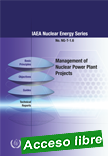 |
Management of Nuclear Power Plant Projects
IAEA Nuclear Energy Series NG-T-1.6
English STI/PUB/1868 978-92-0-104719-9
Member States intending to introduce a nuclear power programme in their country will need to pass through several phases during the implementation. Experience shows that careful planning of the objectives, roles, responsibilities, interfaces and tasks to be carried out in different phases of a nuclear project is important for success.
|
This publication presents a harmonized approach that may be used to structure the owner/operator management system and establish and manage nuclear projects and their development activities irrespective of the adopted approach. It has been developed from shared management practices and consolidated experiences provided by nuclear project management specialists through a series of workshops and working groups organized by the IAEA. The resultant publication presents a useful framework for the management of nuclear projects from initiation to closeout and captures international best practices.
|
 |
 |
Implementation and Effectiveness of Actions Taken at Nuclear Power Plants following the Fukushima Daiichi Accident
IAEA TECDOC No. 1930
English IAEA-TECDOC-1930 978-92-0-120720-3
The IAEA reports on lessons learned and actions taken after the Fukushima Daiichi Accident. This publication addresses the challenges faced and the ongoing needs of Member State organizations which have been implementing and maintaining post-Fukushima actions. It discusses the actions taken (or to be taken), good practices and describes effective solutions to issues in implementation, verification, qualification and maintenance.
|
Also discussed are the approaches to measuring and maintaining effectiveness of actions as well as an analysis of merits, costs and benefits. Examples in decision making for implementation and follow-up policies, programmes and procedures to ensure sustainability in the long term are presented.
|
 |
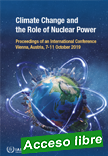 |
Climate Change and the Role of Nuclear Power
Proceedings of an International Conference Held in Vienna, Austria, 7–11 October 2019.
To address the challenges posed by climate change, and to achieve the goals established in the 2015 Paris Agreement, nuclear power has been identified to have great potential to contribute to the 1.5°C climate change mitigation target. This topical conference on climate change and the role of nuclear power, the first of its kind, served as a unique forum for exchanging science-based information on the role of nuclear power in supporting the low carbon energy transformation and for conducting objective discussions on the opportunities and challenges of safe, secure and safeguarded nuclear technology development.
|
The major themes of the conference covered energy and climate change policies, implications for the power sector, environmental perspectives and potential roles of existing, evolutionary and innovative nuclear power systems, including the integration of nuclear/renewable energy systems. In addition to nuclear power’s interim and long term contributions, some strategic and cross-cutting issues relating to public perception, regulations, markets and finance were also addressed. These proceedings provide a summary of the different plenary, technical and side event sessions as well as the full text of the speeches delivered in the opening, closing and high-level plenary sessions of the conference.
|
 |
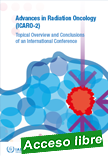 |
Advances in Radiation Oncology (ICARO-2)
Topical Overview and Conclusions of an International Conference
Proceedings Series - International Atomic Energy Agency ¦ English ¦ STI/PUB/1912 ¦ 44 pages ¦ Date published: 2020
These proceedings are the result of a conference on advances in radiation oncology. The aim of the conference was to discuss and define the current role and future potential of medical physics and molecular/biological innovations in routine clinical practice in radiation oncology.
|
It also provided a forum where advances in technology, best practices and quality assurance methodologies were disseminated and scientific knowledge exchanged. The publication presents a summary of the topical sessions and highlights the main conclusions and recommendations that were discussed during the conference.
|
 |
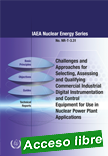 |
Challenges and Approaches for Selecting, Assessing and Qualifying Commercial Industrial Digital Instrumentation and Control Equipment for Use in Nuclear Power Plant Applications
IAEA Nuclear Energy Series No. NR-T-3.31
STI/PUB/1871¦ 81 pp ¦ Date published 2020; ISBN: 978-92-0-105019-9, English
The focus of this publication is on the activities required to demonstrate the suitability of commercial off the shelf (COTS) digital instrumentation and control equipment for use in nuclear safety applications. The publication provides a detailed discussion of the typical challenges associated with the use of COTS devices, including issues associated with unique vulnerabilities and features of digital products.
|
It outlines the strategy for digital COTS device assessment and qualification and describes the typical elements of the process. The publication addresses the specific steps of any justification, including identifying the requirements, selection of the supplier and candidate equipment, planning, assessment and identification of equipment life issues, suitability evaluation and all associated documentation. Guidance on maintaining the compliance of COTS devices as well as related regulatory aspects are also covered.
|
 |
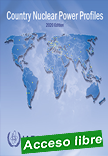 |
Country Nuclear Power Profiles: 2020 Edition
Non-serial Publications English IAEA-CNPP/2020 ¦ Date published 2020
The Country Nuclear Power Profiles (CNPP) publication compiles background information on the status and development of nuclear power programmes across participating International Atomic Energy Agency (IAEA) Member States. The publication summarizes organizational and industrial aspects of nuclear power programmes and provides information about the relevant legislative, regulatory and international framework in each participating State.
|
The Country Nuclear Power Profiles (CNPP) publication compiles background information on the status and development of nuclear power programmes across participating International Atomic Energy Agency (IAEA) Member States. The publication summarizes organizational and industrial aspects of nuclear power programmes and provides information about the relevant legislative, regulatory and international framework in each participating State.
|
 |
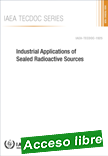 |
Industrial Applications of Sealed Radioactive Sources
English IAEA-TECDOC-1925 ¦ ISBN: 978-92-0-117020-0 ¦ Date published 2020
In industrial processes, it is useful to have a range of non-intrusive techniques that can effectively 'look' through vessel and pipe walls to measure process parameters and to identify plant problems. Sealed radioactive sources, specifically those that emit gamma radiation and neutron particles, are ideally suited for these purposes and have been used for industrial applications for many years.
|
This publication describes several available techniques with sealed radioactive sources, by showing examples of their use in industrial applications and by demonstrating how they can be used to improve process efficiency and to save money. The focus of the publication corresponds to two major techniques with sealed radioactive sources: gamma scanning and neutron backscattering, which are largely applied for diagnosis and troubleshooting in processing vessels, columns and in pipes.
|
 |
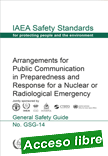 |
Arrangements for Public Communication in Preparedness and Response for a Nuclear or Radiological Emergency
IAEA Safety Standards Series No. GSG-14
STI/PUB/1902 ¦ 102 pages ¦ Date published: 2020 ¦ English
This Safety Guide supports Member States in developing arrangements for communicating with the public and media and coordinating official information in the response to a nuclear or radiological emergency. These arrangements facilitate the successful implementation of protective actions and the delivery of consistent messages.
|
Specifically, the Safety Guide describes the infrastructure and processes needed to provide useful, timely, truthful, consistent, clear and appropriate information to the public in the event of a nuclear or radiological emergency; respond to incorrect information and rumors; and respond to requests for information from the public and from the news and information media. It will help ensure effective and uniform public information and media communications arrangements during nuclear and radiological emergencies. The guidance is applicable for such emergencies, irrespective of the initiator whether that be natural event, human error, mechanical or other failure or a nuclear security event.
|
 |
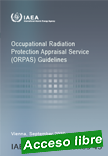 |
Occupational Radiation Protection Appraisal Service (ORPAS) Guidelines
IAEA Services Series No. 43
English ¦ IAEA-SVS-43 ¦ 68 pages ¦ Date published: 2020
The publications by means of which the IAEA establishes standards are issued in the IAEA Safety Standards Series. This series covers nuclear safety, radiation safety, transport safety and waste safety. The publication categories in the series are Safety Fundamentals, Safety Requirements and Safety Guides.
|
.
|
 |
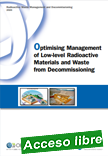 |
Optimising Management of Low-level Radioactive Materials and Waste from
Decommissioning
Low-level and very low-level waste represent the vast majority of radioactive waste by volume from decommissioning activity at nuclear facilities around the world, but they are only a small fraction of the radiological inventory. The availability of the appropriate waste management infrastructure, including a robust process and procedures for managing waste, waste disposal routes and an appropriate safety culture, are key components of an optimal approach to decommissioning.
|
Recognising the important role of an effective waste management strategy in the delivery of a successful decommissioning programme, the NEA Working Party on Decommissioning and Dismantling (WPDD) established an expert group in 2016 – the Task Group on Optimising Management of Low-Level Radioactive Materials and Waste from Decommissioning (TGOM) – to examine how countries manage (very) low-level radioactive waste and materials arising from decommissioning. This report explores elements contributing to the optimisation of national approaches at a strategic level, describing the main factors and the relationships between them. It also identifies constraints in the practical implementation of optimisation based on experience in NEA member countries.
|
 |
| |
|
|

|
|
|
| |
|
|
| |
| |
|
|
| |
| |
|
|
| |
| |
|
|
|
| |
| |
